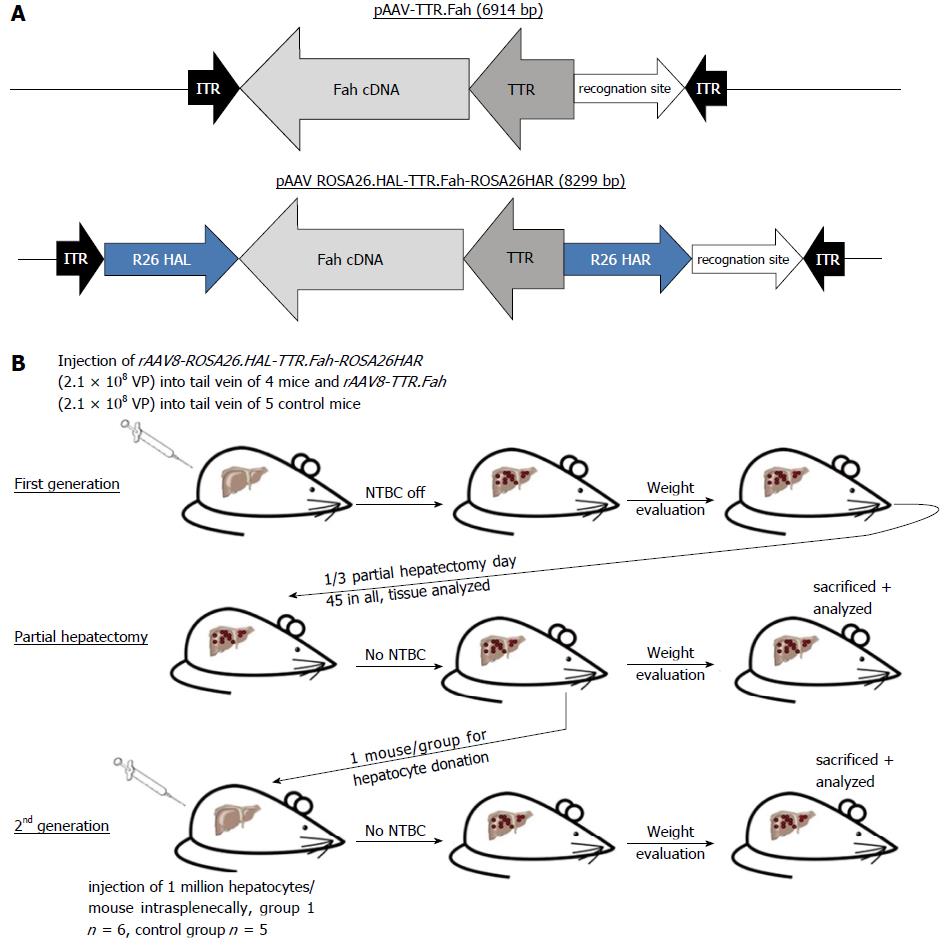Copyright
©The Author(s) 2018.
World J Hepatol. Feb 27, 2018; 10(2): 277-286
Published online Feb 27, 2018. doi: 10.4254/wjh.v10.i2.277
Published online Feb 27, 2018. doi: 10.4254/wjh.v10.i2.277
Figure 1 Flowchart of treating mice.
A: Vector map for rAAV8-ROSA26.HAL-TTR.Fah-ROSA26HAR and for rAAV8-TTR.Fah. Fah cDNA is driven by the TTR promotor and for rAAV8-ROSA26.HAL-TTR.Fah-ROSA26HAR located between the homologous arms of the Rosa26 locus. The vector was cloned into an AAV backbone; B: Scheme for the in vivo experiments. First-generation mice (C57BL/6 FAH∆exon5 strain) were injected with rAAV8-ROSA26.HAL-TTR.Fah-ROSA26HAR (group 1, n = 4) or rAAV8-TTR.Fah (control group, n = 5). The NTBC treatment was stopped, and after 45 d, a partial hepatectomy was performed. In each group, one mouse was used as the donor for hepatocyte transplantation into C57BL/6 Fah∆exon5 mice. These recipients were the second generation of mice in our study. NTBC treatment was discontinued after hepatocyte transplantation. TTR: Transthyretin promoter (liver specific); R26 HAL: Homologous arm left for target locus in Rosa26; HAR: Homologous arm right for target locus in Rosa26; ITR: Inverted terminal repeat.
- Citation: Junge N, Yuan Q, Vu TH, Krooss S, Bednarski C, Balakrishnan A, Cathomen T, Manns MP, Baumann U, Sharma AD, Ott M. Homologous recombination mediates stable Fah gene integration and phenotypic correction in tyrosinaemia mouse-model. World J Hepatol 2018; 10(2): 277-286
- URL: https://www.wjgnet.com/1948-5182/full/v10/i2/277.htm
- DOI: https://dx.doi.org/10.4254/wjh.v10.i2.277









